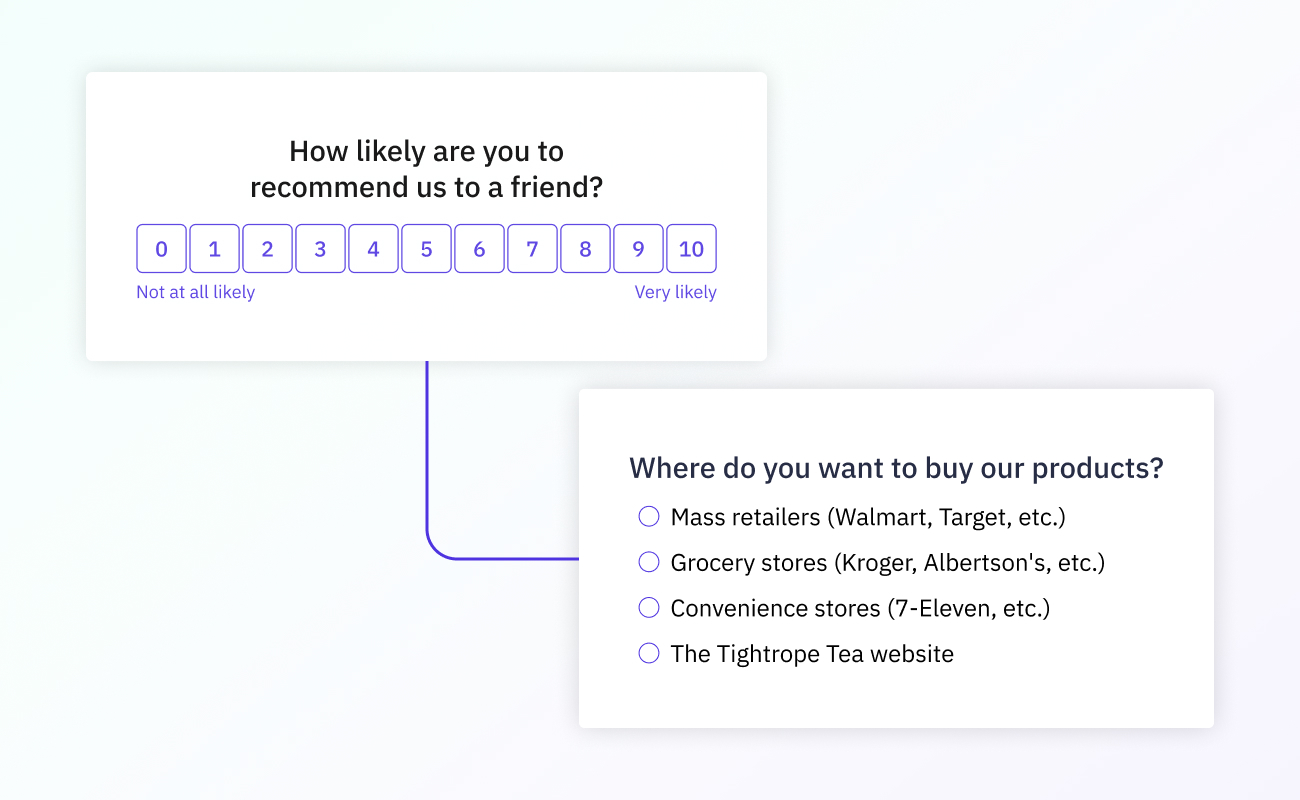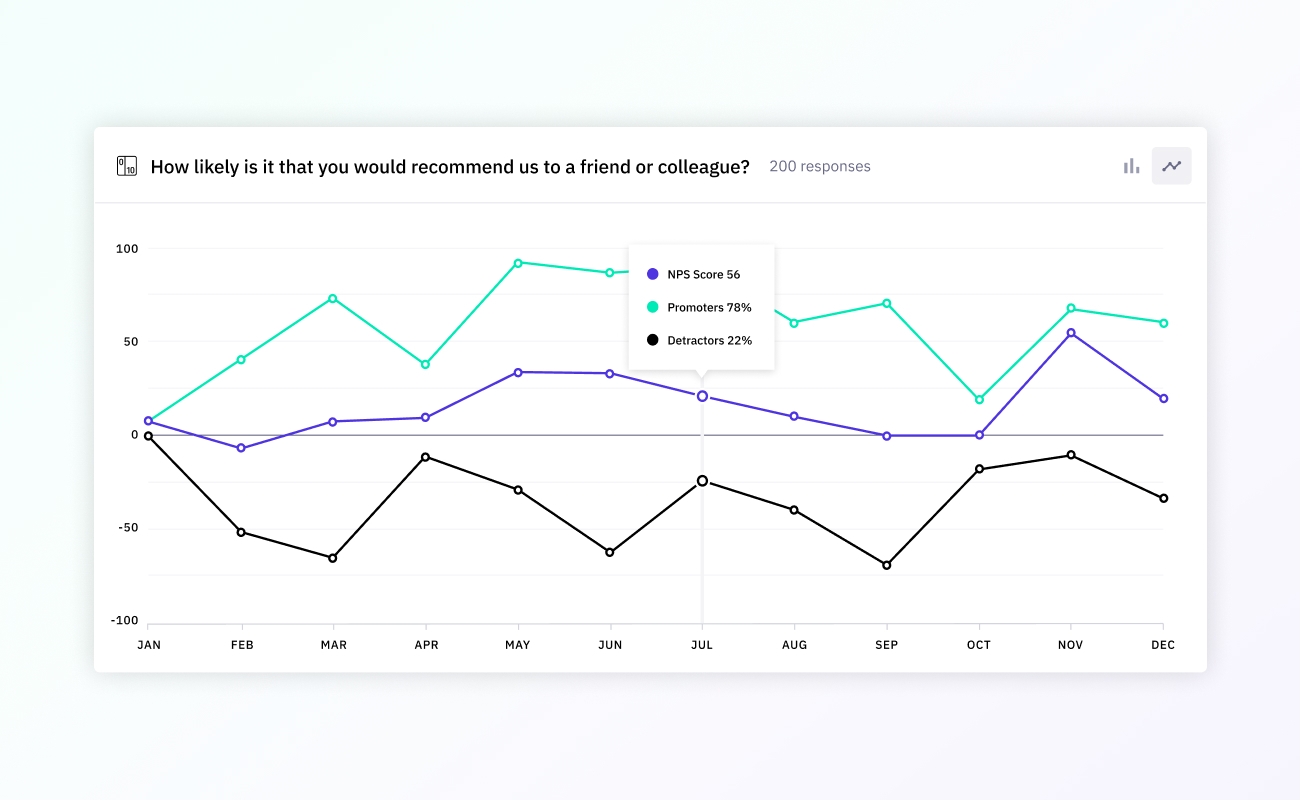How to Set Up Customer Experience Surveys to Optimize Feedback

We know that the consistent delivery of quality customer experiences is critical for your customer retention efforts. Case in point: nearly 90% of customers say they’d switch to a competitor after a negative experience, which of course represents a significant hit to your bottom line and reputation.
This is where having a continuous CX monitoring and measurement program in place is crucial to track the quality of improve your customer experience, identify gaps in your buyer’s journey, and build loyalty for your Shopify store.
But what is a CX monitoring program? At a high level, it’s a way to check on the performance of your CX delivery systems in real-time. It typically consists of three frameworks: Net Promoter Score (NPS), Customer Satisfaction (CSAT), and Customer Effort Score (CES). These frameworks are used to accurately measure customer satisfaction and loyalty levels, and to identify the specific drivers of both customer frustration and happiness.
While CX monitoring increases your understanding of where in your customer’s journey you’re meeting their needs or exceeding their expectations, it also alerts you when you’re doing the opposite. This is perhaps the most important reason why you need to consistently monitor your CX. It gives you an opportunity to fix any issues that are hindering the experiences your customers are having with your brand before they permanently and negatively impact their perception of you.
How to Set Up a Survey for Maximum Insights in Your CX Program
It’s important to note, though, that implementing CX monitoring is just a starting point for developing a more comprehensive customer experience program. It’s vital that you use these frameworks as a stepping stone to learning more about your customers, including their preferences, behaviors, and intentions.
For example, the question, “How likely are you to recommend us to a friend” is the defacto question for measuring NPS. It’s an incredibly simple question that asks your customers to provide a rating of between one and 10. Based on their answers, you can then categorize them as promoters, passives, or detractors.
But you don’t have to stop there. Since engaging with this survey means you’ve already grabbed their attention, you can leverage it as an opportunity to dig deeper into their experience by asking them additional questions. This could lead to more specific insights about what exactly makes your customers happy, or what detracted from their experience so much that they wouldn’t recommend your brand.
The ability to do this really cannot be taken for granted, since the gaps or opportunities you uncover may be ones you didn’t even know existed. As Jess Cervellon, Head of CX at Feastables explained recently during a webinar about post-purchase sales opportunities, “Collecting all these data points actually creates a feedback loop into other aspects of your business like your supply chain, marketing, and your tech team. I’m not just asking basic questions like ‘how was your shopping experience?’. I want to ask multiple questions that are going to be heavy hitters for my customer research.”
We understand this is often easier said than done, though. Your goal is always to make your customers happy, and sometimes, running a survey campaign detracts from your ability to do this. Here’s a few tips to maximize survey engagement.
Don’t Interrupt the Customer Experience to Ask About the Customer Experience
It can be tempting to deliver a survey every time a customer interacts with your brand. But an effective survey strategy requires you to think more efficiently about how and when you ask a customer to take a survey. If you don’t – and you constantly hound your shoppers for feedback – they will bounce from your website and potentially even turn to a competitor that delivers a more seamless CX.
This is why we love micro-surveys. These are simple surveys consisting of 1-3 questions, which means they cause minimal disruption to your customers’ shopping experience. They also enable customers to provide actionable feedback in a matter of seconds. This means you can collect feedback in real-time, and put it into action a lot more quickly than if you were delivering a traditional survey.

When you deliver these surveys matters, too. You want to grab your customers’ attention at a peak moment of engagement. For ecommerce brands, this is most likely after they’ve made a purchase or after they’ve left a review.
Use Incentives to Improve Completion Rates
If you’re intent on gathering lots of customer data to help optimize the customer experience, consider offering your customers something in exchange for completing your survey. As we know, the patience of the modern consumer is dwindling, so taking a customer survey that doesn’t explicitly benefit them is unlikely to be all that high on their priority list.
You can give them a one-time coupon for a discount if they complete your survey or grant them loyalty points they can use for future purchases. Special offers will incentivize consumers to complete surveys, and they may improve the quality of the answers you receive.
Always Be Monitoring
Remember, customer experiences aren’t a one-and-done process. You’ll need to be consistent in your CX program to ensure that your company continues to please customers on all four cylinders. You should regularly ask your customers for input, even if they’ve already replied to your prior surveys.
Continually monitoring your survey results helps you ensure that there aren’t any fluctuations that you need to address, and monitoring is critical after introducing a new product or changes in your policies. Sometimes, significant changes can impact how your customers feel about your brand as well. As we’ve written about before, establishing a customer feedback loop can be a great way to help you identify why a score could be dropping.


You should continuously monitor your scores across all the surveys you use. If you note your scores are trending downward, check your survey results to see if you can identify the root cause for the changes.
For example, when it comes to your store’s user experience, Erin verDorn, Head of Strategy, Fireside Digital, says, “Qualitative data that comes directly from your customers, such as survey results and NPS, are invaluable to improving the user experience on your website.”
“When optimizing a website, a brand must look at both the quantitative metrics (the science) and qualitative data (the art) to understand consumer behavior and make valuable optimizations to the UX,” verDorn adds. “Ultimately, that information has the power to influence product assortment, merchandising, product categorization, and key user functionalities that would make the end-to-end experience better for the user.”
Leveraging Promoters and Detractors to Improve Your CX
Every brand has its promoters and detractors. The latter love everything about your company and are willing to spread the word, so consider asking them to leave public reviews of your business on Google or your website or to refer family or friends to your brand.
Detractors aren’t likely to advocate for your company, but they can still help improve the customer experience. Ask your customer service representatives to reach out to them to find out what went wrong. They may turn a negative situation into a better one by resolving the customer’s issue.
If you need help building a comprehensive CX program, download our helpful e-book to get started!